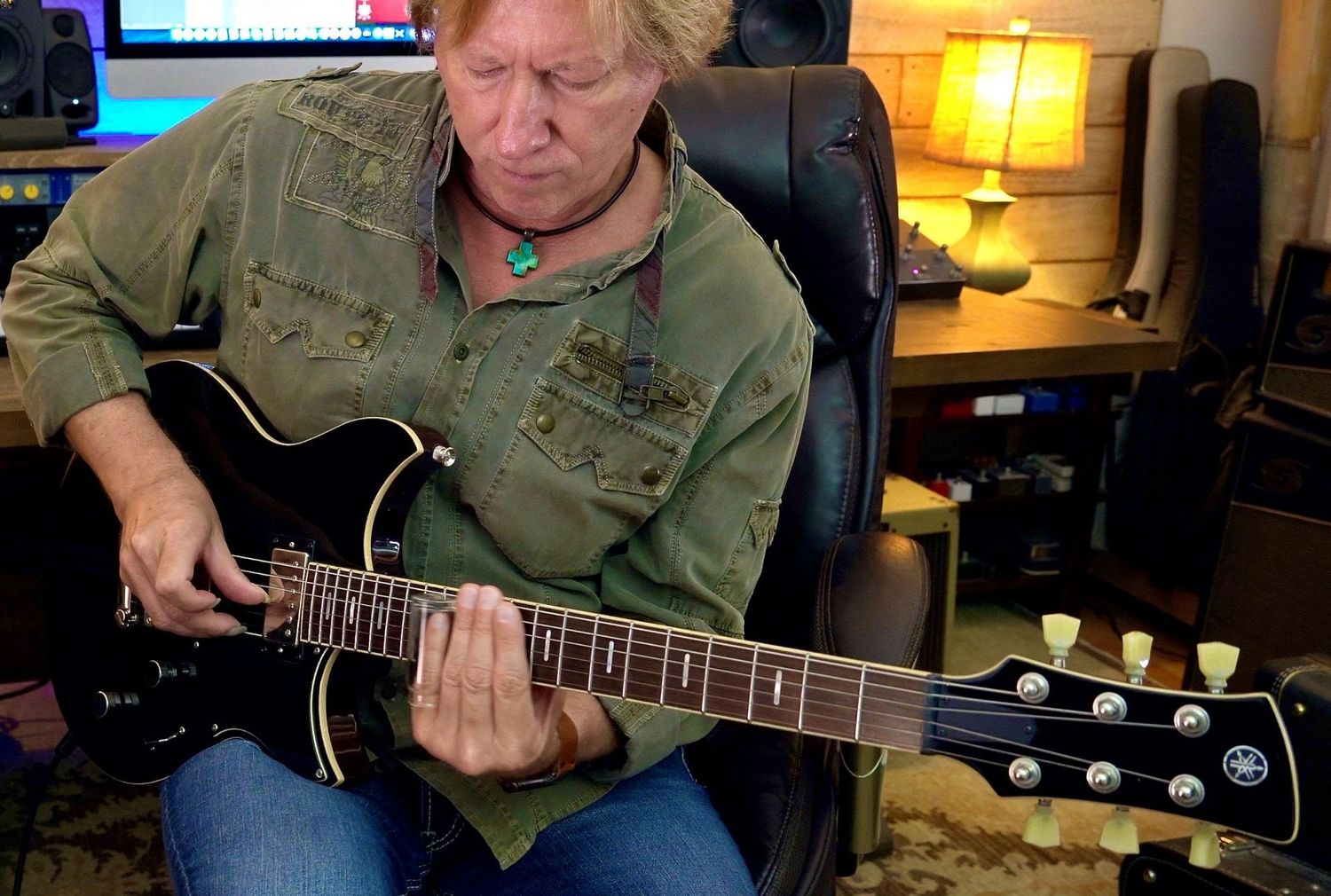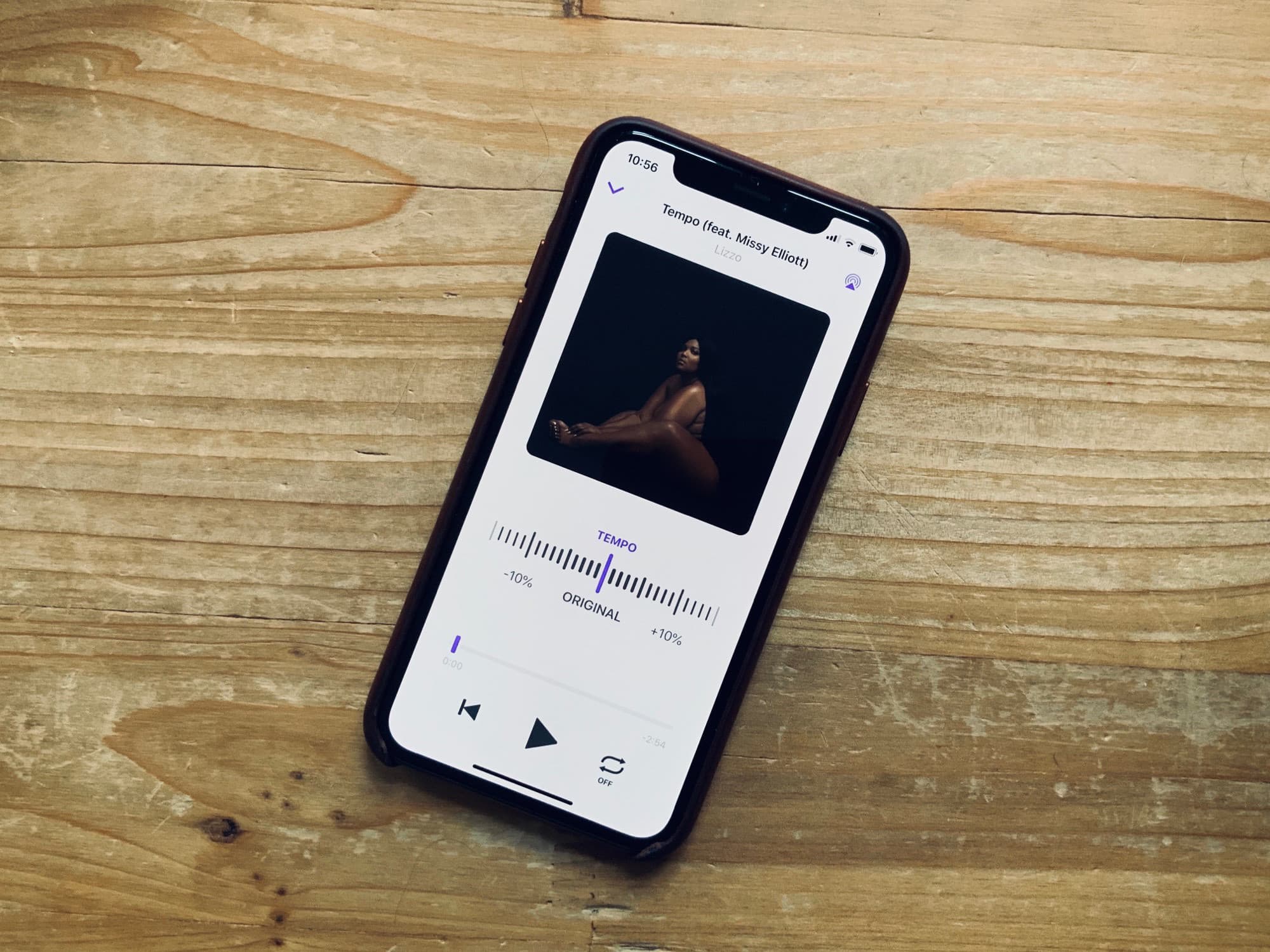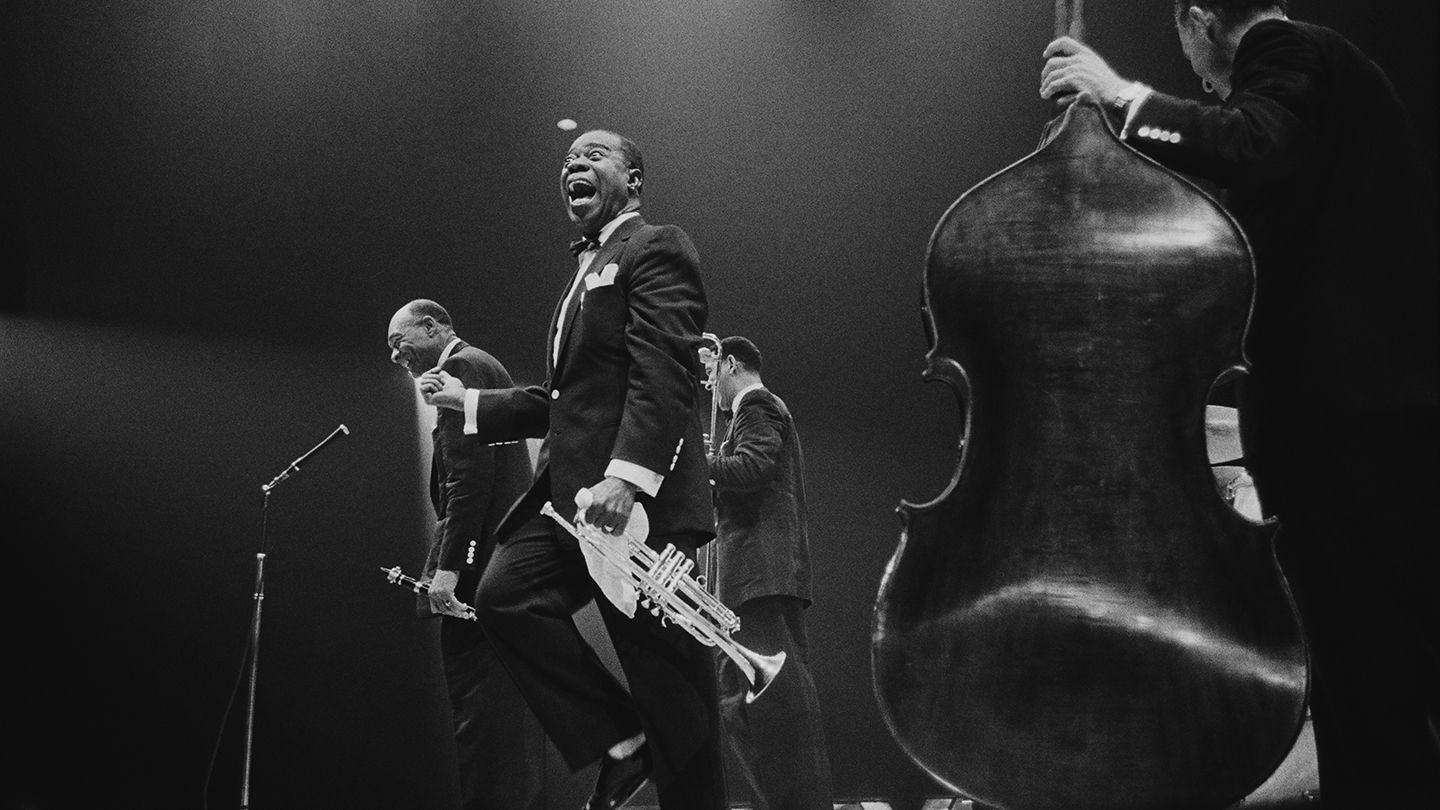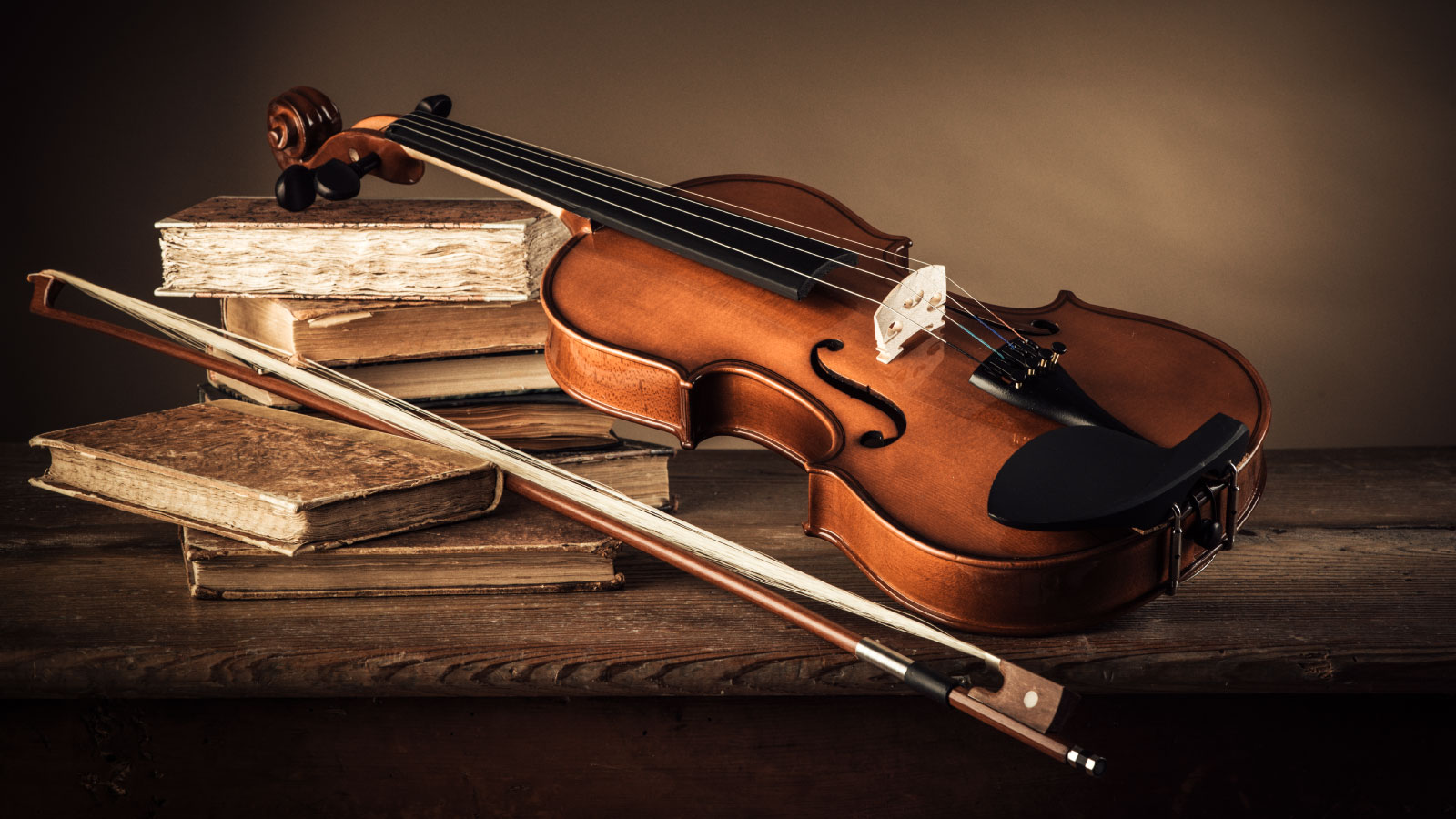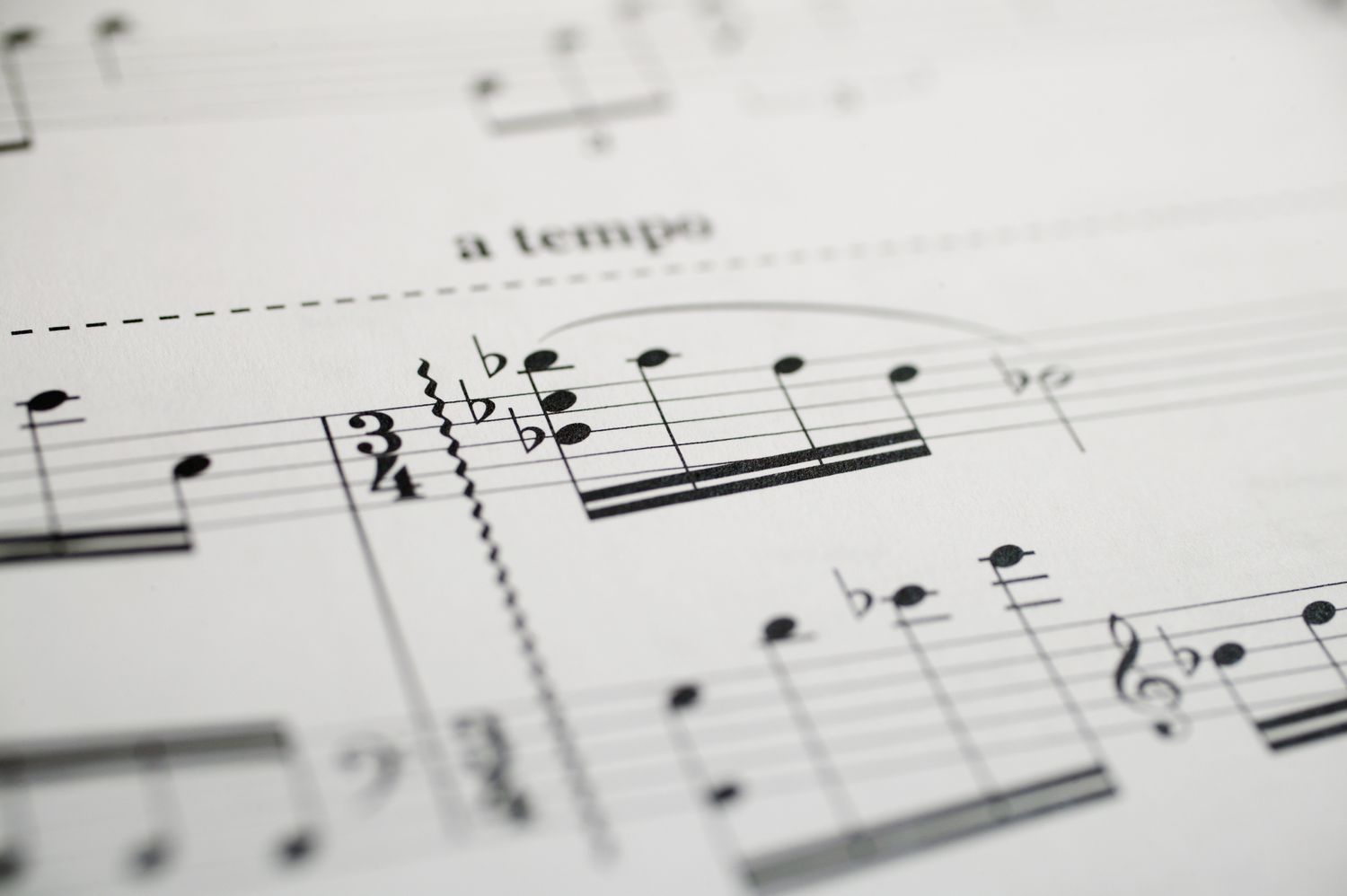Home>Production & Technology>Tempo>How To Count Tempo In Music


Tempo
How To Count Tempo In Music
Modified: January 22, 2024
Learn how to count tempo in music and understand its significance. Discover different techniques for accurately measuring and managing the pace of your musical compositions.
(Many of the links in this article redirect to a specific reviewed product. Your purchase of these products through affiliate links helps to generate commission for AudioLover.com, at no extra cost. Learn more)
Table of Contents
- Introduction
- Understanding Tempo
- The Relationship Between Tempo and Beats Per Minute (BPM)
- Different Methods to Count Tempo
- Method 1: Tapping or Clapping
- Method 2: Using a Metronome
- Method 3: Analyzing the Sheet Music
- Method 4: Listening to the Pulse of the Music
- Tips for Accurately Counting Tempo
- Conclusion
Introduction
Tempo is a fundamental aspect of music that influences the mood, energy, and overall feel of a composition. It refers to the speed at which a piece of music is played or performed and is typically measured in beats per minute (BPM). Understanding and accurately counting tempo is essential for musicians, music producers, and dancers to ensure they stay in sync and maintain the desired rhythm.
When it comes to music, tempo plays a crucial role in setting the tone and conveying emotions. A fast tempo creates a sense of excitement and energy, while a slow tempo evokes feelings of relaxation and calmness. It is vital for performers and musicians to have a solid grasp of tempo to effectively convey the intended emotional message of a musical piece.
Counting tempo is not only beneficial for musicians, but it is also important for dancers. Tempo provides dancers with a framework to execute their movements with precision and synchronize their routines with the music. It allows them to create visually appealing and impactful performances that captivate the audience.
In this article, we will explore different methods to count tempo and understand how tempo is measured in beats per minute (BPM). Whether you are a musician, producer, dancer, or simply an avid music lover, mastering the art of counting tempo will enhance your understanding and appreciation of music and allow you to engage with it on a deeper level.
Understanding Tempo
Tempo refers to the speed or pace at which a musical piece is performed. It determines how fast or slow the rhythm of the music is. Tempo plays a vital role in conveying the intended mood, energy, and overall feel of a composition. It is the backbone that holds the musical elements together and guides the performers through the piece.
Tempo is measured in beats per minute (BPM), which indicates the number of beats or pulses happening within one minute. A higher BPM indicates a faster tempo, while a lower BPM signifies a slower tempo. The tempo of a musical piece is often indicated at the beginning of the sheet music using Italian terms, such as “grave” (very slow), “allegro” (fast and lively), or “adagio” (slow and stately).
Understanding tempo is crucial for musicians, as it provides them with a framework to interpret and execute the music accurately. It helps them maintain a consistent rhythm and stay synchronized with other performers. Tempo also guides the dynamics, phrasing, and overall expression of the music, enabling musicians to convey the intended emotions effectively.
Furthermore, tempo is an essential aspect of music production. Producers and audio engineers use tempo as a reference point to align various tracks, instruments, and vocal elements within a composition. It ensures that all the elements are in sync and create a cohesive musical experience.
In addition to its musical implications, tempo also has practical applications in other artistic disciplines. Dancers rely on tempo to choreograph their routines and execute their movements in perfect coordination with the music. Tempo provides them with a reference point to create seamless transitions, dynamic highlights, and synchronized group performances.
As a music lover, understanding tempo allows you to appreciate the intricacies and nuances of a musical piece. It helps you connect with the emotions and intentions behind the music, allowing you to engage with it on a deeper level.
The Relationship Between Tempo and Beats Per Minute (BPM)
Tempo and beats per minute (BPM) have a direct relationship in the world of music. BPM is the unit of measurement used to quantify the tempo of a musical piece. It represents the number of beats or pulses that occur in one minute. The higher the BPM, the faster the tempo of the music, and vice versa.
Understanding the relationship between tempo and BPM is crucial for accurate counting and interpretation of music. It allows musicians, producers, dancers, and music enthusiasts to communicate and synchronize their efforts effectively.
In musical notation, the tempo is often indicated by a metronome marking or a numerical value alongside an abbreviation or Italian term denoting the tempo’s character. For example, “120 BPM” may be accompanied by “andante” to signify a moderately slow tempo. These markings provide musicians with a clear indication of how fast or slow they should play or perform a piece.
The BPM value is determined by the composer or arranger, and it sets the pace for the entire piece. Different genres of music typically have different ranges for BPM. For instance, a typical classical piece might have a BPM ranging from 60 to 120, while a fast-paced dance track could have a BPM exceeding 120.
BPM serves as a common reference point for musicians during rehearsals and performances. It helps them maintain a consistent rhythm and stay in sync with other musicians. When playing in an ensemble or band, the BPM acts as a musical guide, ensuring that everyone is on the same page and playing together seamlessly.
In music production, BPM is a critical element in creating electronic music and remixes. Producers use BPM as a foundation to align different tracks and elements within a composition. This synchronization of BPM allows for smooth transitions, precise mixing, and creating cohesive musical arrangements.
For dancers, understanding the relationship between tempo and BPM is essential. BPM provides them with a clear understanding of the rhythm and timing of the music. It allows dancers to synchronize their movements and choreography, creating visually captivating performances that are in perfect harmony with the music.
Overall, the relationship between tempo and BPM is fundamental to the world of music. By understanding this relationship, musicians, producers, dancers, and listeners can better appreciate and engage with the rhythmic elements of a composition, ensuring a cohesive and enjoyable musical experience.
Different Methods to Count Tempo
Counting tempo accurately is essential for musicians, dancers, and music enthusiasts. It ensures that everyone involved in the performance or appreciation of music stays in sync and maintains the correct rhythm. There are several methods you can use to count tempo, depending on your preferences and the resources you have available.
Method 1: Tapping or Clapping: One of the simplest and most accessible methods to count tempo is by tapping or clapping along with the music. Start by listening to the music and identifying the prominent beats. Then, tap or clap in time with those beats, feeling the pulse of the music. Count the number of taps or claps you make within a span of 15 seconds. Multiply that number by 4 to get the estimated BPM.
Method 2: Using a Metronome: A metronome is a device that produces regular ticks or beats at a specific tempo. It is widely used by musicians and dancers to practice and perform with consistent timing. Set the metronome to the desired tempo or BPM, and simply follow along with the beats. The metronome provides a steady reference point, helping you maintain the correct tempo throughout your practice or performance.
Method 3: Analyzing the Sheet Music: If you have access to the sheet music of a particular piece, you can often find indications of the tempo within it. Look for tempo markings, metronome markings, or Italian terms that describe the tempo’s character. These markings usually give you a clear indication of how fast or slow the piece should be played.
Method 4: Listening to the Pulse of the Music: Another method to count tempo is by listening to the pulse of the music. Pay attention to the underlying rhythm and feel the natural flow of the beats. This method requires developing a sense of internal timing and feeling the music intuitively. It may take some practice, but it can be a valuable skill for musicians and dancers alike.
Whichever method you choose, it’s important to remember that counting tempo is not about being rigid or mechanical. It’s about understanding the overall rhythm and feel of the music and allowing yourself to be immersed in its groove. With practice and a keen ear, you will become more proficient in accurately counting tempo and maintaining the desired rhythm in your musical endeavors.
Method 1: Tapping or Clapping
Tapping or clapping along with the music is a simple and effective method to count tempo. It allows you to feel the pulse of the music and synchronize your movements with the beats. This method is accessible to everyone, whether you are a musician or just an avid music lover.
To count tempo using this method, start by listening carefully to the music and identifying the prominent beats. These are the beats that you naturally feel drawn to or that stand out in the music. It could be the bass drum hits, snare hits, or any other rhythmic element that captures your attention.
Once you’ve identified the prominent beats, tap or clap in time with them. Pay attention to the rhythm and try to match your taps or claps with the musical beats as closely as possible. You can tap your fingers on a table, clap your hands, or even tap your foot on the ground. The key is to maintain a steady and consistent beat throughout the process.
Next, count the number of taps or claps you make within a span of 15 seconds. This count will give you an estimate of the beats per 15 seconds. To convert this into beats per minute (BPM), multiply the count by 4. For example, if you count 20 taps or claps in 15 seconds, you would estimate the BPM to be 80 (20 x 4).
It’s important to note that this method provides an estimation of the tempo and may not be as precise as using a metronome or analyzing the sheet music. However, it is a valuable technique for quickly gauging the general tempo of a piece and getting a feel for its overall rhythm.
By tapping or clapping along with the music, you develop a sense of internal timing and become more attuned to the nuances of the rhythm. It also helps improve your overall musicality and ability to stay in sync with other musicians or dancers.
Whether you are practicing your instrument, rehearsing with a band, or simply enjoying a favorite song, tapping or clapping along with the music is a versatile method to count tempo and enhance your musical experience. Give it a try and feel the rhythm come alive!
Method 2: Using a Metronome
A metronome is a valuable tool for counting tempo accurately and maintaining a steady rhythm. It is widely used by musicians, dancers, and music producers to practice, perform, and create music with precise timing. Using a metronome ensures consistency and helps you stay in sync with the desired tempo.
Here’s how you can count tempo using a metronome:
- Select a metronome device or use a metronome app on your smart device or computer.
- Set the metronome to the desired tempo or beats per minute (BPM) indicated in the sheet music or as per your preference.
- Start the metronome, and it will produce regular ticks or beats at the set tempo.
- Listen carefully to the metronome beats and try to align your playing or movements with each tick.
- Focus on maintaining a consistent rhythm and timing, ensuring that your beats or movements align precisely with the metronome.
Using a metronome provides a clear and audible reference point for counting tempo. It trains your internal sense of timing and improves your ability to play or perform with accuracy and precision.
Metronomes offer various features to tailor the experience to your needs. They often allow you to adjust the volume, choose different sounds for the beats, and even set complex rhythms for more advanced practice sessions. Some metronome apps also provide visual cues, such as flashing lights or moving pendulums, to aid in counting tempo.
Not only does the metronome help with individual practice sessions, but it is also useful in group settings. When rehearsing with a band or ensemble, everyone can synchronize their playing to the metronome, ensuring that everyone is on the same page and playing together tightly.
With consistent use and practice, the metronome becomes an invaluable tool for musicians and dancers to develop a strong sense of timing, improve their rhythm, and achieve a cohesive, professional sound or performance.
So, whether you are a pianist, guitarist, drummer, dancer, or any musician aiming for precision, incorporating a metronome into your practice routine will undoubtedly enhance your counting of tempo and overall musicality.
Method 3: Analyzing the Sheet Music
Analyzing the sheet music is a method of counting tempo that relies on the notations and markings provided by the composer or arranger. This method is particularly useful if you have access to the sheet music of a musical piece.
Here’s how you can count tempo by analyzing the sheet music:
- Begin by examining the sheet music for any tempo indications. Look for specific markings that indicate the tempo or the speed at which the piece should be played.
- Check for metronome markings, which are numerical values indicating the beats per minute (BPM). The metronome marking can be written directly on the sheet music or indicated by a symbol such as “M.M.” followed by the BPM value.
- Look out for Italian terms that describe the tempo’s character. Common tempo markings include “grave” (very slow), “adagio” (slow and stately), “allegro” (fast and lively), and many more. These terms provide a general indication of the desired tempo.
- Pay attention to any other notations or musical directions that might give clues about the tempo. These could include words like “rubato” (flexible tempo) or instructions for accelerando (gradual increase in tempo) or rallentando (gradual decrease in tempo).
By analyzing the sheet music and identifying the tempo markings, metronome markings, or Italian terms, you can gain valuable insights into the intended speed and feel of the musical piece.
It’s important to note that while the sheet music provides guidance on the tempo, it does not dictate a rigid approach. Musicians often bring their own interpretation and expression to a piece, allowing for some flexibility within the given tempo indications.
If you are studying or performing a specific musical composition, analyzing the sheet music will help you understand the composer’s intentions and enable you to execute the piece with accuracy and artistic expression.
Sheet music analysis is especially valuable for classical music where precise tempo indications are often provided in the manuscript. However, it can be applied to any genre of music that uses sheet music notation.
So, if you have sheet music in front of you, take the time to carefully analyze it for tempo indications. This will provide you with valuable information to count tempo accurately and perform the music with the intended speed and character.
Method 4: Listening to the Pulse of the Music
Counting tempo through listening to the pulse of the music is a method that relies on developing a keen sense of internal timing and feeling the rhythm intuitively. It doesn’t require any external tools or sheet music but rather emphasizes your ability to connect with the music on a deeper level.
Here’s how you can count tempo by listening to the pulse of the music:
- Begin by listening attentively to the music and focusing on the underlying rhythm.
- Pay attention to the regular recurring beats or pulses within the music.
- Internalize these beats and let yourself feel the natural flow of the rhythm.
- Find a way to physically express the pulse, whether by tapping your foot, moving your body, or nodding your head.
- As you connect with the pulse of the music, mentally count the number of beats you perceive within a specific timeframe, such as 15 seconds.
- Multiply this count by 4 to estimate the beats per minute (BPM).
Listening to the pulse of the music requires practice and honing your ability to feel and internalize the rhythm. It is a method that encourages you to trust your instincts and immerse yourself in the musical experience.
This method is particularly useful when there are no specific tempo markings or metronome indications available and when you want to approach the music with a more organic and expressive feel.
Developing a strong sense of internal timing through this method allows you to become more versatile and adaptable as a musician or dancer. It helps you synchronize your movements or playing naturally with different types of music, from genres with intricate rhythms to pieces with more fluid and flexible tempos.
While relying on your internal pulse may not provide the exact BPM as a metronome or precise tempo markings would, it offers a unique opportunity to connect with the music on a personal level and infuse your own interpretation into your performance.
By listening to the pulse of the music, you tap into the essence of its rhythm and become more attuned to its nuances. It allows for a more dynamic and expressive execution, making your performance captivating and engaging.
So, the next time you engage with music, take a moment to listen to the pulse and let it guide your understanding and counting of the tempo. Embrace the natural flow of the rhythm and allow yourself to be carried away by the power and energy of the music.
Tips for Accurately Counting Tempo
Counting tempo accurately is crucial for musicians, dancers, and music enthusiasts to stay in sync and maintain the desired rhythm. Here are some tips to help you improve your ability to count tempo with precision:
- Practice with a metronome: Regularly practicing with a metronome builds your sense of timing and helps you develop a steady internal pulse. Start by setting the metronome to a comfortable tempo and practice playing or moving in time with the beats. Gradually increase the tempo to challenge yourself and improve your accuracy.
- Focus on subdivisions: Pay attention to the subdivisions within a measure, such as eighth notes or sixteenth notes. Counting these smaller divisions will give you a clearer sense of the overall tempo and help you stay in sync with the music’s rhythm.
- Use a reference recording: Listening to a reference recording of the music you are counting tempo for can provide valuable guidance. Follow along with the recording, paying close attention to the timing and rhythm. This can help you internalize the tempo and better understand how the music flows.
- Practice different tempos: Challenge yourself by practicing at different tempos. Start with slower tempos to improve your accuracy and gradually work your way up to faster speeds. This will enhance your adaptability and allow you to confidently perform in a variety of musical contexts.
- Listen for cues: Pay attention to specific cues within the music that indicate changes in tempo. These cues can include dynamic markings, accents, or changes in the melody. Being aware of these cues will help you anticipate tempo variations and adjust your counting accordingly.
- Work with a mentor or instructor: Seeking guidance from a knowledgeable musician or dance instructor can greatly improve your ability to count tempo. They can provide valuable feedback, offer practical exercises, and share their expertise to help you develop a strong sense of timing.
- Practice counting silently: Develop the skill of counting tempo internally without tapping or moving physically. This silent counting technique will allow you to focus solely on the music and develop a deeper understanding of its rhythmic structure.
Remember, counting tempo is not just about keeping a steady beat—it’s about understanding the subtle nuances and dynamics of the music. By implementing these tips and consistently practicing your counting skills, you will become more proficient at accurately counting tempo and delivering performances that are precise, expressive, and captivating.
Conclusion
Counting tempo is an essential skill for musicians, dancers, and music enthusiasts alike. It allows us to stay in sync, maintain a steady rhythm, and bring out the desired emotions in a musical performance. Whether you tap along, use a metronome, analyze sheet music, or listen to the pulse of the music, there are various methods to count tempo.
Understanding the relationship between tempo and beats per minute (BPM) provides a solid foundation for accurate tempo counting. It helps us interpret and perform music with the intended speed and character.
By incorporating these different methods into our musical practice, we develop a more intuitive sense of timing and rhythm. Tapping or clapping along allows us to actively engage with the music, while using a metronome provides a precise reference point. Analyzing sheet music offers valuable insights into the composer’s intentions, and listening to the pulse of the music allows for a more personal and expressive approach.
Additionally, practicing with tips such as subdividing, using reference recordings, and working with mentors or instructors can further refine our ability to count tempo accurately. These techniques help us develop a strong internal sense of timing and improve our overall musicianship.
Ultimately, counting tempo is not just about the technical aspect of keeping time; it is about connecting with the music and understanding its rhythmic structure. It allows us to communicate and collaborate effectively with other musicians, create seamless dance routines, and appreciate the artistry of a musical composition.
Whether you are a musician, dancer, or avid music lover, mastering the art of counting tempo enhances our musical experiences and deepens our understanding and appreciation of the power of rhythm in shaping the beauty of music.


